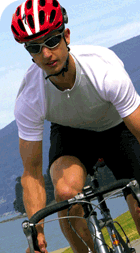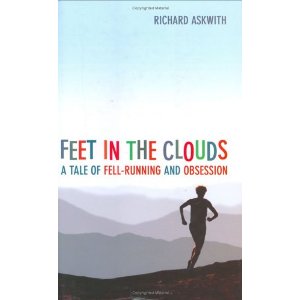Whole Food Marathon Fueling

By: Brendan Brazier
As you are probably aware, commercial versions of many sport nutrition products are not always the healthiest option. Commonly packed with artificial flavours, refined carbohydrates, denatured proteins and sometimes even harmful fats, I certainly did not want to consume anything that did not put overall health first. Some commercial options are not as bad as they once were; however, I like to know exactly what goes into mine and keep them completely natural. I opt to make my own. Whole food energy bars, sport drinks, energy gels, energy pudding, post workout recovery drink, whole food meal replacement smoothie and even performance pancakes – all part of my specific sport nutrition program.
Immediately Before Exercise
The body’s first choice for fuel during intense exercise is simple carbohydrate. However, once the body has burned all the simple carbohydrate available it will then opt for available complex carbohydrates. It is in the best interest of the athlete to ensure the body is provided with enough simple carbohydrate to fuel activity so that complex carbohydrate is not relied upon. If the body has to resort to burning complex carbohydrate while exercising at a high intensity it will have to use extra energy in order to convert the complex carbohydrate into simple carbohydrate. Additionally, if too much protein is eaten before intense exercise it will likely cause muscle cramping due to the fact that it requires more fluid to be metabolized than does carbohydrate or fat. Also, protein in not what you want to have your body burning for fuel. Protein is for building muscle, not fueling it. When protein is consumed in place of carbohydrate immediately before exercise, and therefore burned as fuel, it burns “dirty,” meaning that toxins are created as a result of its combustion. The production and elimination of toxins is of course a stress on the body and as such causes a stress response. Ultimately endurance will decline.
For a pre-exercise snack, the most important factor is digestibility. If the food eaten shortly before a training session or race requires a large amount of energy to digest, it will of course leave the body with less, the last thing needed before exercise. Additionally, hard-to-breakdown food will require more blood be sent to the stomach to aid in the digestion process. Of course when blood is in the stomach it can’t be in the extremities delivering oxygen and removing waste products, which is a requirement for optimal physical performance. It is also not uncommon for a “stitch” to occur in the diaphragm area if food has not been digested completely before a workout or race, especially an intense one, begins.
For high-intensity shorter training and racing, it is beneficial to fuel up on simple carbohydrate. The healthiest source of this is fruit. Dates are a good choice since they are rich in a simple carbohydrate called glucose. Glucose goes straight to the liver for immediate energy. The body does not have to convert it to a different form to utilize, making glucose-rich-foods the ideal primary fuel before or during a high-intensity workout. However, it burns quickly, meaning that if glucose is the only carbohydrate source, it will have to be replenished about every 20 minutes after 1 hour of intense activity to keep the body adequately fueled.
If I’m going to perform a mid range to longer workout that lasts up to 3 hours, but is still quite intense or compete in a race such as a marathon, I will have a nutritionally balanced raw bar. In addition to the dates, I include a small amount of alkaline protein, usually raw hemp, and an EFA source such as ground flax seeds or soaked almonds for prolonged, high net gain energy. In my first book, The Thrive Diet, I also include recipes for sport drinks, energy gels and recovery smoothies.
Try this recipe before your next run.
Chocolate Blueberry Energy Bars
These nutrient-packed bars are easy to make and offer a convenient way to carry whole food nutrition with you.
1 cup fresh or soaked dates
1/4 cup almonds
1/4 cup blueberries
1/4 cup cocao powder
1/4 cup ground flaxseed*
1/4 cup hemp protein powder*
1/4 cup unhulled sesame seeds
1 tsp fresh lemon juice
1/2 tsp lemon zest
Sea salt to taste
1/2 cup sprouted or cooked buckwheat (optional)
1/2 cup frozen blueberries
In a food processor, process all ingredients except the buckwheat and frozen blueberries. Knead buckwheat and berries into mixture by hand.
To shape as bars, flatten the mixture on the clean surface with your hands. Place plastic wrap over top; with a rolling pin, roll mixture to desired bar thickness. Cut mixture into bars.
Alternatively, form mixture into a brick; cut as though slicing bread.
Makes approximately 12 50-gram bars.
* For even greater nutrient value, ground flax and hemp protein can be substituted on a 1:1 ratio with Vega Whole Food Smoothie Infusion or, better yet, Vega Whole Food Meal Replacement.
Brendan Brazier is a former professional Ironman triathlete, bestselling author on performance nutrition, and the creator of an award-winning line of whole food nutritional products called VEGA. He is also a two-time Canadian 50km Ultra Marathon Champion.






 Mizuno is proud to sponsor Brendan as he travels the world promoting a Vegan lifestyle. Brendan has written many books our members may find interesting and his latest – Foods to Thrive On, contains great recipes and his approach to nutrition.
Mizuno is proud to sponsor Brendan as he travels the world promoting a Vegan lifestyle. Brendan has written many books our members may find interesting and his latest – Foods to Thrive On, contains great recipes and his approach to nutrition. Mizuno is proud to support Steve Boyd, owner of Physi-Kult running club in Kingston, On and Track & Field coach at Queen’s University.
Mizuno is proud to support Steve Boyd, owner of Physi-Kult running club in Kingston, On and Track & Field coach at Queen’s University. “By failing to prepare, you are preparing to fail.” – Benjamin Franklin
“By failing to prepare, you are preparing to fail.” – Benjamin Franklin


 Our Magazine
Our Magazine
